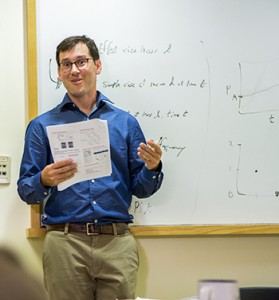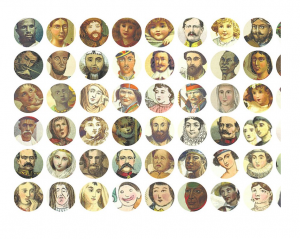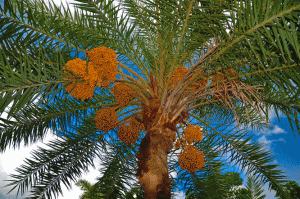Enter your address to receive notifications about new posts to your email.
Articles tagged Population Genetics
(66 results)
-
Geneticist John Novembre named MacArthur “Genius”
GSA is proud to congratulate GENETICS author John Novembre, who was recently named a 2015 MacArthur Fellow or “MacArthur Genius.” Novembre is a computational biologist whose research focuses on understanding human evolutionary history. His research findings have improved the field’s knowledge of human migratory patterns and demonstrated a correlation between shared ancestral geography and genetic similarity among Europeans. These…
-
Human Genetic Diversity and Social Inequalities
As ancient humans spread across the globe from their evolutionary birthplace in Africa, they tended to lose a little genetic diversity at each step along the way. New settlements were probably often founded by small groups that carried only a subset of the total diversity present in their homelands. Successive rounds of this “founder effect”…
-
Sex with Benefits: Candida albicans and the Selective Advantage of Mating
A vast number of species depend on sexual reproduction for survival. Sex facilitates adaptation and rids populations of deleterious mutations. Despite the benefits of this process, sex can be remarkably costly and disrupt already advantageous genetic combinations. Only 20% of fungal species have been observed to reproduce sexually, and a long-standing mystery for researchers is…
-
The new genomic world of wild worms
Mark Blaxter (Institute of Evolutionary Biology, University of Edinburgh) reports on the “Caenorhabditis Genomes Project” workshop at GSA’s recent 20th International C. elegans Meeting. Caenorhabditis elegans, affectionately referred to as “the worm,” is one of the prettiest and most informative of the model organisms. It is see-through, has a simple lifecycle and a remarkably simple anatomy,…
-
A “date” with the history of Phoenix dactylifera cultivation
The sticky fruit of the date palm has a tangled history. New research in G3 explores the palm’s genetic diversity and traces its earliest cultivation to at least two distinct regions in North Africa and the Arabian Gulf. The date palm (Phoenix dactylifera) is one of the world’s oldest cultivated trees and has close ties…
-
The Secret Sex Lives of the Bdelloid Rotifers
Bdelloid rotifers have been veiled in mystery for decades. Despite extensive studies of this class of tiny freshwater invertebrates, no one has observed any trace of sex: no proven males, hermaphrodites, mating, or meiosis. Unlike other asexual organisms, which tend to be short-lived in evolutionary history, the apparently asexual bdelloid rotifers have managed to persist…
-
Turning spit and data into treasure
By the time President Obama announced the Precision Medicine Initiative in January 2015, the Genetic Epidemiology Research on Adult Health and Aging (GERA) cohort was already a trailblazing example of this new approach to medical research. GERA is a group of more than 100,000 members of the Kaiser Permanente Medical Care Plan who consented to…
-
The trouble with HLA diversity
The most diverse of all human genes encode a set of proteins at the frontline of our immune system. Many different Human Leukocyte Antigen (HLA) proteins are encoded by genes clumped together in one portion of the human genome known as the major histocompatibility complex region. HLA proteins sit on the surface of cells and…
-
Mapping granny: ancestry inference for admixed individuals
Like all biological populations, human groups can’t be neatly divided. Real populations are connected to each other, and their borders are blurred by migration and mixing. But when inferring ancestry of an individual from genetic data, populations are typically simplified into tidy, discrete units. In the December issue of G3: Genes|Genomes|Genetics, Yang et al. describe…
-
Neanderthal Relations: Interbreeding or Ancestral Structure?
In Eurasia, humans once had Neanderthals for neighbors. That time of co-existence seems to have left its marks in our genome; non-Africans today share more genetic variants with Neanderthals than Africans do. But does this really mean there was interbreeding between humans and the Hominids next door? Some have previously proposed an alternative explanation for that…
-
Old Transposable Elements, New Tricks
Transposable elements don’t proliferate in genomes at a steady pace; they often arrive in bursts. But models of neutral TE evolution assume transposition occurs at a constant rate. That makes it harder to test, for instance, whether low TE allele frequencies in a population are due to negative selection or just a recent transposition burst.…












